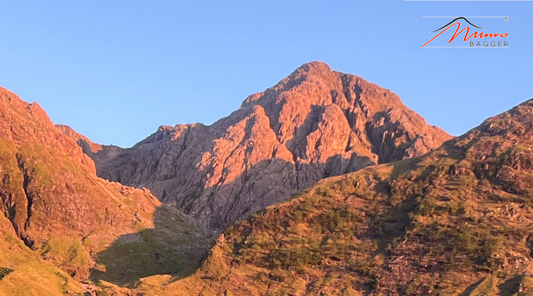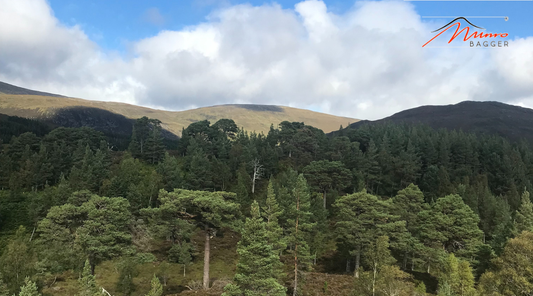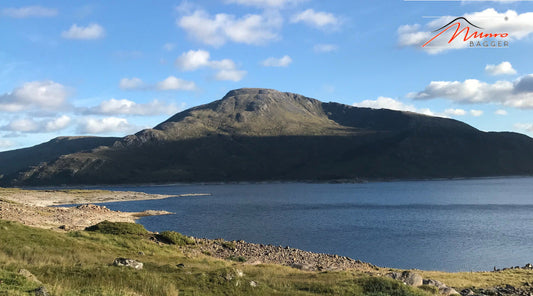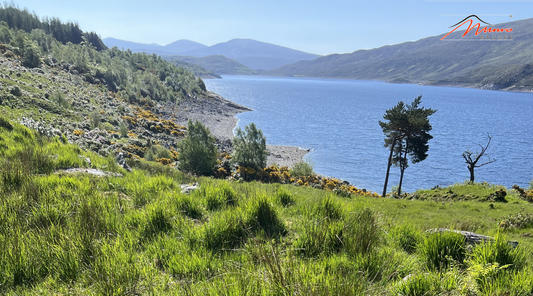Wild Camping in Scotland: An Expert Guide to the Right Camping Equipment
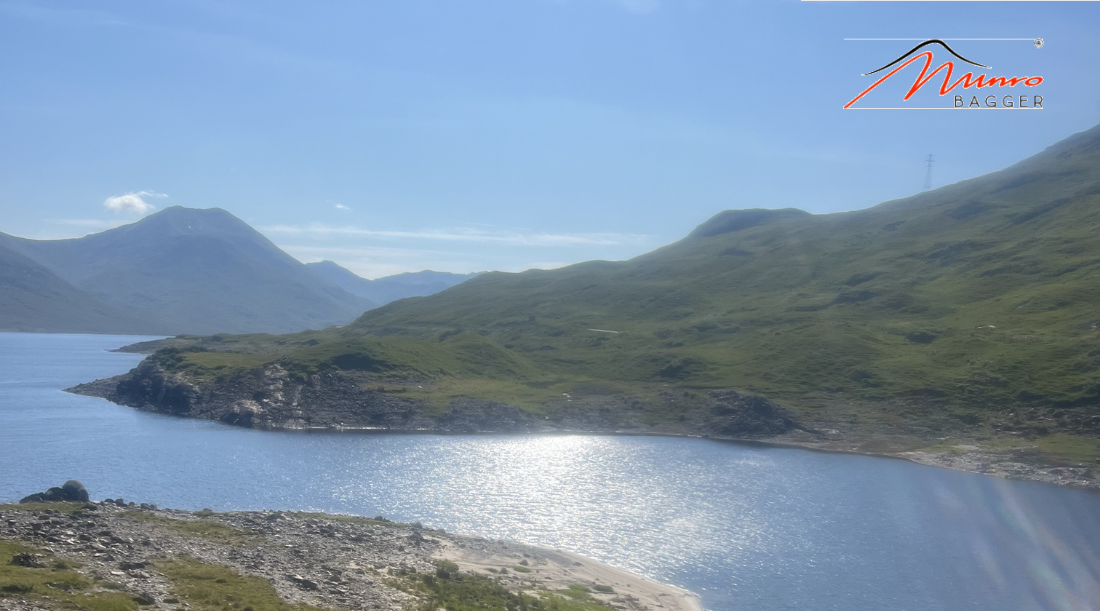
Envision the delight of setting up your tent with stunning views down a beautiful glen, or being deep in the forest under a canopy of trees, or even in the middle of your own expansive beach vista. Preparing a small dinner on a camping stove while enjoying nature around you. Wild camping in Scotland can be completely perfect. If done correctly, this can be the ultimate escape from a hectic lifestyle!
Scotland offers a fantastic destination for wild camping. Still, we understand that people may be curious and seeking advice on how to camp properly. So, Munro Bagger is here to discuss the essential things you should know before getting started.
What Is Wild Camping?
In the simplest terms possible, it is camping that is done in the open nature, still not in the areas reserved for campsites or caravan parks. You can do it just for one night or even for weeks, and you can set your tent in any area of nature you like.
Is It Legal To Go Wild Camping?
The legality of wild camping depends on where in the UK you are actually doing camping. In Scotland, it is allowed by law due to the Land Reform Act 2003. The situation is also similar in Dartmoor National Park in southern England, where wild camping is covered by the National Parks & Access to the Countryside Act 1949.
In the entire UK, apart from the mentioned locations, it is against the law to perform such an act without the landowner's consent. While it may be against the law, wild camping is generally allowed to a great extent, particularly in the national parks of the UK.
Where Can You Go Wild Camping in Scotland?
It is easier to answer where you cannot camp in Munros of Scotland than where you can because the list is limited according to the Scottish Outdoor Access Code. Statutory public rights of access to land were created by the Scottish Land Reform Act of 2003. As a result, the public, in principle, has the right of access to all land, provided they adhere to specific regulations.
Areas Where Camping Is Not Allowed
Never camp in an enclosed area, whether it is near crops or animals.
Do not set up camp near buildings, roads, or historic places.
When you camp close to private houses, make sure to get their permission first.
Key Camping Rules
Always camp in small numbers.
Avoid spending more than three nights in the same place.
Remove all the garbage from your property.
Use a windproof gas stove rather than a fire.
Remove the signs of your tent pitch, along with any remaining fire debris.
What Are the Leave No Trace Principles for Camping?
Check out the following Leave No Trace principles for camping:
Plan Ahead and Prepare
First, choose locations that are not crowded. Next, think about your water sources, wear the right clothes, and arrange transportation for the removal of your garbage. Make sure camping is permitted in the area you want to go.
Camp & Travel on Sturdy Surfaces
When choosing a wild campsite, consider the impact of your camping. Check first that the place you are pitching, cooking, and sitting is a safe surface and that you have not caused any permanent damage to the vegetation underneath.
Get Rid of Trash Correctly
Bring all your rubbish, such as wrappers, scraps, glass, cans, and hygiene products like wet wipes or tampons. Although it is ideal to pack out human waste, it can also be disposed of properly.
Leave What You Discover
Ensure that you leave no waste during Munro bagging, you have used, thereby ensuring that there are no traces of your stay. Do not take natural things such as rocks, plants, or wood. Nature should remain wild so that people can use and enjoy it.
Minimise Campfire Effects
In all cases, using a stove is superior to a fire. However, if building a fire, consider the suggestions. Consider the potential fire damage and wood usage. Also, ensure your fire is totally out with water rather than dirt.
For more information, head to this guide: Ready for Scotland's Epic Challenge? A Complete Guide to Munro Bagging
What Equipment Is Required for Wild Camping?
For your wild camping trip, you will need to have the following equipment with you:
Rain Shelter/Tent
Invest in a decent camping rain shelter. We believe that a simple pop-up tent will be the future with no hassle at all. This one was also equipped with a blackout function, so we didn't get a wake-up call from the light early in the morning.
Sleeping Bag
Down is the best in my opinion, but some synthetic materials are easier to dry out. If you desire to go with a lighter pack, then use a lighter and cooler bag and wear more clothes during the night.
Clothing
In addition to your "tent wear," packing outdoor gear is a good idea so that you can have a dry outfit when you are in the tent. It also acts as extra insulation for your sleeping bag. A synthetic insulation pullover or jacket works great with thin thermal long johns.
RuckSack
Remember to pack a well-padded multi-day rucksack with a 40-70 litre capacity. The padding on the shoulders and the waist was not good, and after a few days, the pain was so intense that I had to stop my 11-day trek. Choose a large backpack with enough space instead of a small one.
Food
Food is the most essential thing. For long camping trips, fat is the best option, as it is the most energy-dense food you can eat. The most useful hint: do not forget to bring along a small can of condensed milk in case you want to fancy your tea or coffee, and a little treat for yourself.
Rely on Munro Bagger for Wild Camping Essentials!
Wild camping in Scotland is an amazing experience that no one should miss; however, it is also very important that you have the right gear so as to be safe and comfortable throughout your trip. Quality gear, from strong tents to dependable cooking equipment, will ensure that you are ready for Scotland's ever-changing weather.
With Munro Bagger, you can be assured of having all your wild camping necessities taken care of with the best outdoor equipment available. Whether you are hiking the Highlands or camping by the calm lochs, Munro Bagger is your source for the best camping equipment in Scotland that will not only make your adventure unforgettable but also easy and safe. Prepare yourself to discover the great outdoors of Scotland!
FAQs
What is the fastest time to bag all the Munros?
The record of the quickest time to climb all the Munros is 31 days, 10 hours, and 27 minutes. Ultra-runner Jamie Aarons achieved it in June 2023.
What is a good mountain to climb for beginners in the UK?
Mam Tor in the Peak District is an excellent option for beginners looking for their first ridgeline walk. Both local trekkers and tourists from other areas are drawn to this peak.
What does it mean to bag a Munro?
One of the Munros is a mountain in Scotland with a height of more than 3,000 feet (914 meters), and it is possible to 'bag' it by going to the top.
What not to pack when camping?
When packing for a camping trip, avoid glass containers, heavily scented items, unnecessary electronics, expensive jewellery, single-use plastics, denim clothing, and other valuables. Always pack light and opt for reusable products whenever possible.
